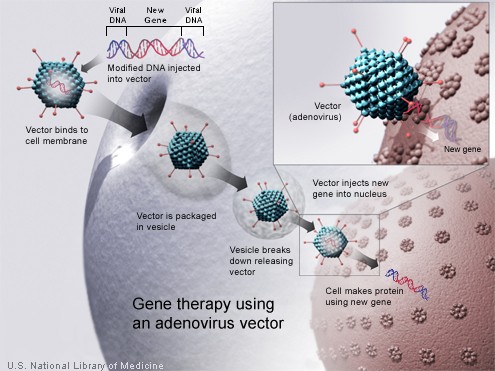adenovirus

Gene therapy using an adenovirus vector.
An adenovirus is a virus that carries double-stranded DNA and can infect cells whether they are dividing or not. Once inside a cell, adenoviruses travel to the cell's nucleus, and their genes are activated. However, the adenovirus does not integrate its DNA into the cell's genome, so the cell discards it after a week or two, and its effects cease.
Adenoviruses can cause respiratory diseases, including the common cold (see adenovirus infection), but can also be used to help patients through gene therapy. They were first isolated in 1953 by investigators trying to establish cell-lines from adenoidal tissue of children removed during tonsillectomy and from military recruits with febrile illness.
All adenovirus particles are similar: non-enveloped, 60–90 nanometers in diameter. They have icosahedral symmetry easily visible in an electron microscope by negative staining and are composed of 252 capsomers: 240 "hexons" + 12 "pentons" at the vertices of an icosahedron (2-3-5 symmetry).


